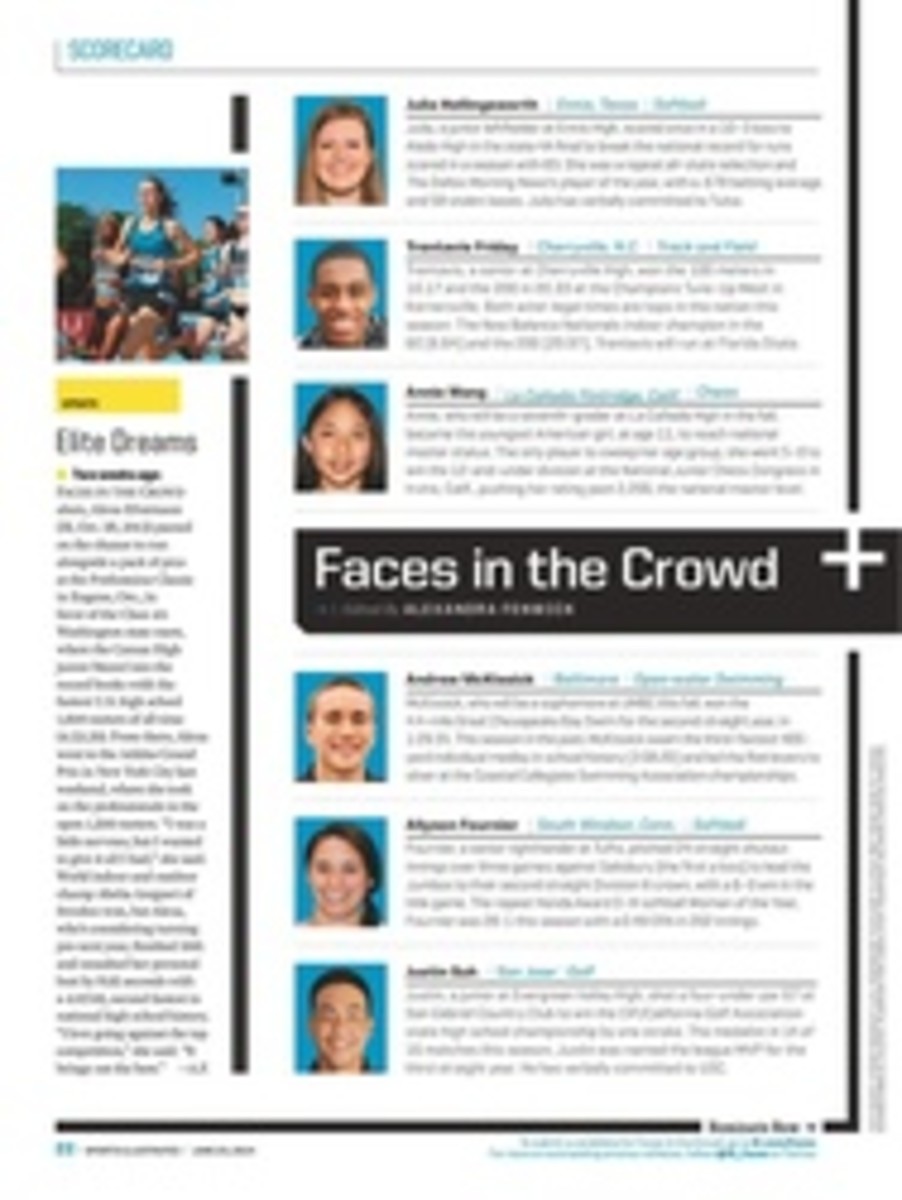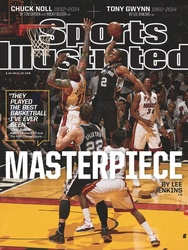
The New Deadball Era
BY THE END of the 2008 season the lords of college baseball knew something had to be done. Hitters were armed with high-performing metal bats that could send balls flying at dangerous velocities and had become a menace not just to pitcher safety but also to the balance of the game. (Division I teams averaged 6.6 runs per game that season.) The college game was so lopsided that before the 2011 season the NCAA implemented strict new standards: Hitters could only use metal bats engineered to perform like wooden bats.
The game that is on display at the College World Series in Omaha this week bears little resemblance to what was played in the pre--bat restriction days. In 2010 there was just under one home run per game in Division I. Last season there were .36 home runs per game. At the College World Series last year, only three balls left the park in 14 games, and the 86 runs scored were the fewest in Omaha since 1973, when wood bats were last used. (In '98, the height of the live-bat era, there were 62 home runs and 195 runs in 14 games.)
Homers have become so hard to come by that most college coaches now rely on the kind of small-ball attack that would make Ty Cobb proud. The 2013 national champion, UCLA, tied a CWS record by laying down a dozen sacrifice bunts in just five games.
The changes have flummoxed one set of observers: major league talent evaluators, who are now finding it difficult to project how college players will transition to pro ball. "It is challenging for pro scouts to give most college hitters a power grade," says Chris Pittaro, a special assistant to A's general manager Billy Beane. "No one wants the ball in the air."
"I see kids flying out to the warning track and getting a talking-to in the dugout like they did something wrong," says a longtime American League scout. "They just missed a home run, but they're reprimanded. I had one of our minor league managers tell me he has to deprogram some of these college kids, to bring back their aggression."
College baseball's small-ball evolution highlights a simmering tension between college coaches and pro scouts: What's best for the coaches' careers—winning games now—isn't what's best for the major league development machine. "They are not hired to develop players for the pro game," says J.P. Ricciardi, the Mets' special assistant to the GM. "And they know they can get fired if they don't win. So they've had to adjust the way they play, and honestly I can't blame them."
"What I say to the scouts is, If a kid can hit, a kid can hit," says St. John's head coach Ed Blankmeyer, who has won 612 games in his 19 seasons. "It's different in college than in the pros because we can't put up with a lot of strikeouts. We need to make contact and advance runners. Scouts should still be able to see which guys can swing the bat."
When college power hitters do come along, big league organizations are quick to grab them. The Cubs chose third baseman Kris Bryant with the No. 2 pick in the 2013 draft after he led the NCAA with 31 home runs at the University of San Diego; Bryant already has 22 home runs this season at Double A. Earlier this month the Cubs took Indiana catcher Kyle Schwarber with the No. 4 pick—even though Baseball America only rated him as the 17th-best prospect—because of his bat: 14 home runs and a .659 slugging percentage as a junior this season. (Kentucky first baseman A.J. Reed was taken in the second round by the Astros after going deep a Division I best 23 times for the Wildcats this year.)
Meanwhile the NCAA is again tinkering in an effort to find offensive equilibrium. Next season college baseball will introduce the so-called flat-seam baseball. For many years the college ball has had higher seams than the version used by the pros. A Washington State University test from 2013 showed that a ball with flatter seams has less drag as it flies through the air: In the lab a high-seam ball traveled an average of 367 feet, while the flat seam averaged 387 feet when struck under identical conditions.
"The hope is we'll find the right balance between pitching and offense," says Kentucky coach Gary Henderson, whose Wildcats were tied for fourth nationally this season with 60 home runs.
But for now, don't expect to see the next great power hitter in Omaha. "We prefer to see most of these kids when they get away from their college programs, maybe in the Cape Cod League, where the shackles are taken off and they're allowed to just play the game," says the AL scout. "Until then I'll probably continue looking for power hitters at the high school level."±
NASCAR
Racing Legacy
14
Extra Mustard
Wedding Flashers
16
TechKnow
Stay Cool
18
SI Edge
Ike Taylor's Fridge
20
Faces in the Crowd
22
Dan Patrick
Dale Earnhardt Jr.
23
The Case for
Loving LeBron
24
GO FIGURE
40
The number of World Cup game tickets reportedly found in the backseat of his taxi by a Brazilian cab driver, who promptly returned them.
158
Career postseason games with at least 10 points and 10 rebounds for the Spurs' Tim Duncan, breaking the record of 157 that had been held by Magic Johnson.
$1 billion
Estimated net worth of Charlotte Hornets owner Michael Jordan according to an analysis by Forbes, making him the first athlete to reach that threshold.
1
Player since 1920 who has gone 5 for 5 with three home runs and nine RBIs in a single game: the Indians' Lonnie Chisenhall who did it on June 9 against the Rangers.
HOME 674 / AWAY 878
NUMBER OF HOME AND AWAY MATCH SHIRTS, RESPECTIVELY, PACKED BY BELGIUM'S WORLD CUP TEAM, ACCORDING TO BRUSSELS AIRLINES. THE RED DEVILS OPENED THE WORLD CUP ON TUESDAY AGAINST ALGERIA.
ILLUSTRATION
ILLUSTRATION BY DARROW
PHOTO
WORLDCUPTICKETING.COM (TICKET)
PHOTO
BILL FRAKES/SPORTS ILLUSTRATED (BASKETBALL)
PHOTO
PATRICK SEMANSKY/AP (CHISENHALL)
PHOTO
KENT SMITH/NBAE/GETTY IMAGES (JORDAN)
TWO PHOTOS
WWW.FOOTBALL-SHIRTS.CO.UK (JERSEYS)

